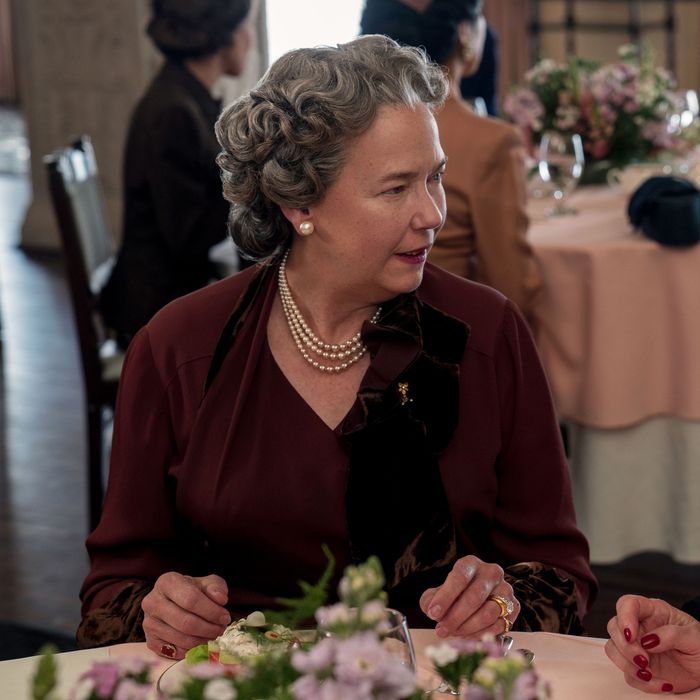
The roller-coaster experience of watching Netflix’s Hollywood, a.k.a. “desperate broke dudes rewrite the golden-era movie industry,” requires you to spend a lot of time wondering whether the show is good, bad, unintentionally bad in a good way, or maybe even intentionally good by way of being very bad. The show is a send-up of the myths of that Hollywood era, full of smut and orgies and gas-station employees who turn out to be sex workers, framed within a morality tale about how marginalized people could get together and change an industry for the better (as long as the rich people up top are moved by their stories).
For the first few episodes, it seems like Hollywood might just be able to swerve between these conflicting extremes, but at some point, it careens into utter chaos, though everyone ends up getting Oscars anyway. After a spirited internal debate among Vulture’s staff about when Hollywood becomes totally lawless, we felt it was necessary to put in some hard investigative work, break things down episode by episode (and even scene by scene), until we pinpointed the exact inflection point of crapitude.
Spoilers follow, duh.
Episode 1: Jack Castello starts turning tricks at a gas station, though strictly of the straight varietyStarting at the beginning, to calibrate our study, we can safely say that this is pretty tame. The idea of gas-station attendants working as sex workers is a nod to the history of Scotty Bowers, who claims to have been a real-life pimp to the stars, and the stuff Hollywood depicts in its first episode is pretty tame compared to Bowers’s true stories. If you leaned into this idea, and especially embraced Dylan McDermott’s gas-station pimp, you’d have a very cool show.
Are we on the rails? Yeah, it’s fun so far!
Episode 7: Meg, a movie inspired by the story of Peg Entwistle, wins Best Picture, Best Actress, Best Director, but not Best Actor, which is sad somehowSkipping to the end of the series, and wow, we are way off the deep end. Chaos reigns. Our heroes have all gotten together and made a movie that is so good that it sweeps the Oscars and also saved America from racism and homophobia, all because everyone gives such good speeches at the awards show. This is like if the first season of Glee ended with Rachel Berry winning not regionals, but American Idol, and maybe Miss Universe, too.
Are we on the rails? Nope, bonkers-a-palooza at this point.
Episode 2: Jack Castello gets a job by sleeping with Patti LuPone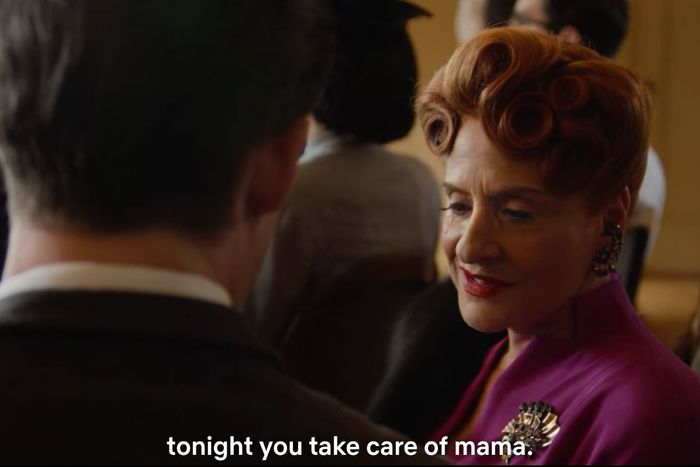
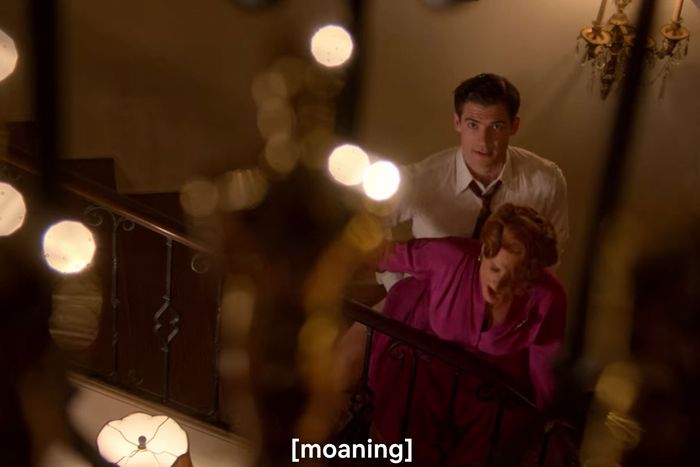
Let’s retreat back to the safety of the early Hollywood episodes and figure out how we got where we ended up, if that’s even possible. In episode two, Jack gets a big break by servicing Avis Amberg (the legend, Patti LuPone), a former movie star and now-wife of the head of Ace Pictures, who’s resentful of the fact that she was “too Jewish” for Hollywood. (Patti is extremely Italian in real life, but has played several Jews, so I guess we can let it pass.) This is all a step up from the gas-station shenanigans of the first episode, but still very fun! It sets up a Hollywood Bel Ami of sorts, revealing how a beautiful man can conquer an industry through seducing various beautiful women, especially if he has a Robert Pattinson jawline.
Are we on the rails? [Moaning] Yeah, we’ll allow it!
Episode 7: Avis and friends invent the concept of a “wide release” for MegLet’s dive back into the raging waters of the last episode of Hollywood, where, in order to release their edgy movie, the team at Ace Pictures decides that they’ll have to drop it in a lot of screens at once, all over the country. They call it a “wide release,” which, according to the laws of this universe, would allow the movie to make a lot more money by targeting black audiences in the South. It’s a nice idea, but also totally nonsense, considering that the wide release didn’t really exist until the release of Breakout in 1975 (according to Wikipedia, which is at least a more reliable source than this show), they never discuss the marketing budget that would be required to get the word out on a scale big enough for that kind of release, and they also hand wave most of the problems with, you know, systemic racism that would make this really difficult.
Are we on the rails? Nah. It’s a nice fantasy, but man, what a fantasy.
Episode 3: Jim Parsons dances as SalomeBack in the first half of Hollywood, things are getting wilder, though still pretty tame, relatively. In an attempt to give the infamously abusive agent Henry Willson a backstory, Hollywood has him dance around with some veils imitating Salome, just to show what he keeps bottled up inside. It’s a blunt swing at another direction the show could’ve gone, focusing on the psychological damage of closeted men in the industry at that era. It pulls that idea off a little better with Joe Mantello’s Dick Samuels, who at least never turns to a character and says, basically, “This is my backstory.”
Are we on the rails? Wild and wobbly, but sure. (Truly off the rails? The fact that, at the end of the season, Henry Willson gets to stick around and be rehabilitated! The man was real bad, show!)
Episode 6: Ace agrees to give Avis more control of his studio, and then suddenly diesA big moment of Hollywood blithely clearing away pretty much all conflict in its later episodes. Patti and Rob Reiner (Rob Reiner!) make up after his heart attack, which happens after his affair, and then just to really set things in stone, in case tensions between him and Avis could flare up again, he dies. In these scenes, Avis also makes peace with her daughter Claire (Samara Weaving), which is further pity, because taking away the opportunity for Patti LuPone to shout at a young blonde ingenue is just rude.
Are we on the rails? Nope! But in a boring way!
Episode 4: Camille Washington gives the best screen test of all time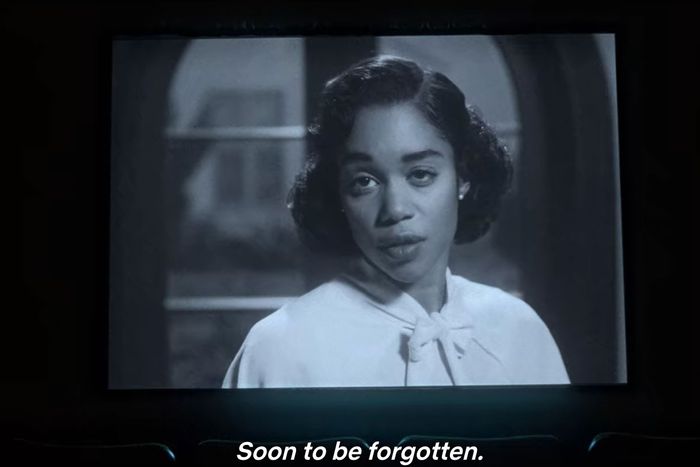
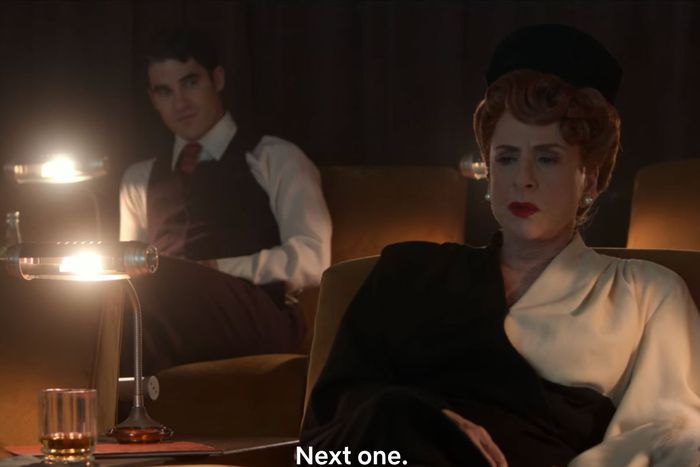
Now we’re closer to the tipping point. By this scene, Camille (Laura Harrier) has managed to get the rare chance to record a screen test for the big movie version of the Peg Entwistle story, and she so completely nails the audition that everyone at Ace pictures really considers casting her in the part. It’s a fantastical idea, but it also depends on Camille’s screen test being ridiculously good, and sadly, it just objectively isn’t that compelling. (Mulholland Drive this ain’t.) Props to Patti LuPone and Holland Taylor for trying to sell their amazement, but if you’re gonna commit to a Hollywood fantasy, you really need to deliver the glittery goods.
Are we on the rails? Yeah, but we’re close to skidding off. It nearly breaks the suspension of disbelief, but if everything else worked, maybe, just maybe, we could forgive this.
Episode 5: They decide the story is better if Meg doesn’t actually jump off the Hollywoodland signLater, once we’re into cloud cuckoo land, they’ve cast Camille as the lead, re-named the movie from Peg to Meg since it’s now about a fictional black woman instead of the actual Peg Entwistle, and then they realize the ending doesn’t quite work. What kind of message does it send, Jeremy Pope and Darren Criss wonder, if a movie ends with a black woman committing suicide? Never mind that it would eliminate the stakes of the movie not to have a tragic ending, or really its reason to exist — why turn a movie about someone jumping off the Hollywoodland sign into a movie about someone deciding, eh, let’s maybe not jump off the Hollywoodland sign? — they have to release something with a good moral! It’s all basically language around positive representation, which feels especially hollow if it all boils down to “movies about underrepresented people are good, but only if the characters always do the right thing in them.”
Are we on the rails? We’re very close to a crash now. Embrace tragedy, Hollywood! Embrace conflict! Give us something that has some texture!
Episode 4: Eleanor Roosevelt herself insists on diversityThis scene, at the end of episode four, is definitely where the show totally breaks. The idea is that Avis meets up with her good friend, actual Eleanor Roosevelt (played by Harriet Harris, Frasier’s iconic evil agent Bebe) and tells her that they can’t decide whether to make Peg with Claire or Meg with Camille. Eleanor Roosevelt suddenly, inexplicably launches into a lecture about the importance of representation onscreen, and how much Meg might mean to black girls in the South. It’s a patronizing vision of history, where so many social issues could just be solved thanks to the largesse of the powerful, if they could just think about things the right way. It’s also a vision that still leaves most of the powerful people in charge. Eleanor isn’t FDR, sure, but she’s still very much a beacon of white money and power, and pivoting the season around her intervention makes it all toothless.
Are we on the rails? This is it, the exact moment when the show totally falls apart. There’s a revolution in Hollywood, but it’s only a superficial one.
"Hollywood" - Google News
May 15, 2020 at 09:10PM
https://ift.tt/2Z5vCud
When, Exactly, Does Hollywood Go Off the Rails? - Vulture
"Hollywood" - Google News
https://ift.tt/38iWBEK
https://ift.tt/3fdiOHW
Bagikan Berita Ini
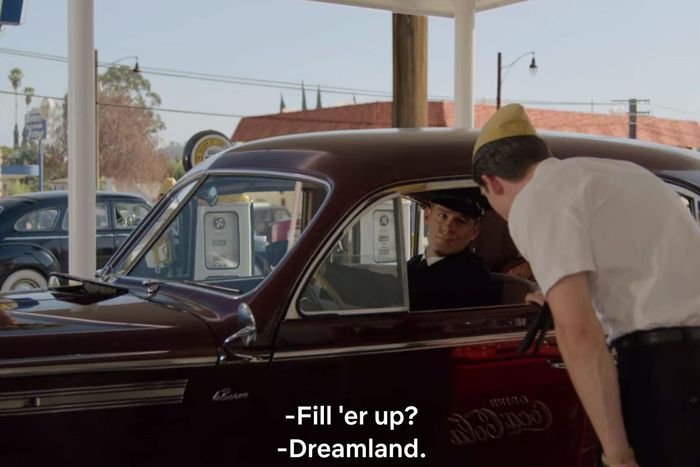
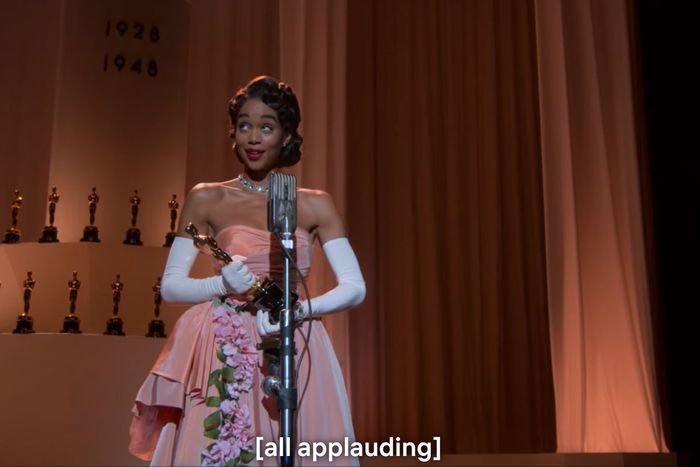
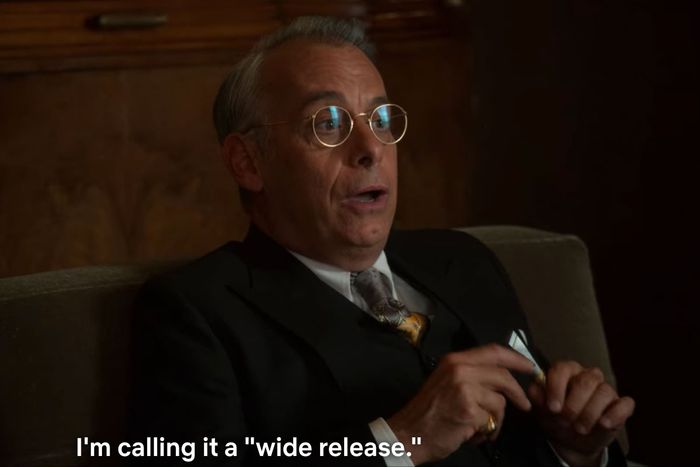
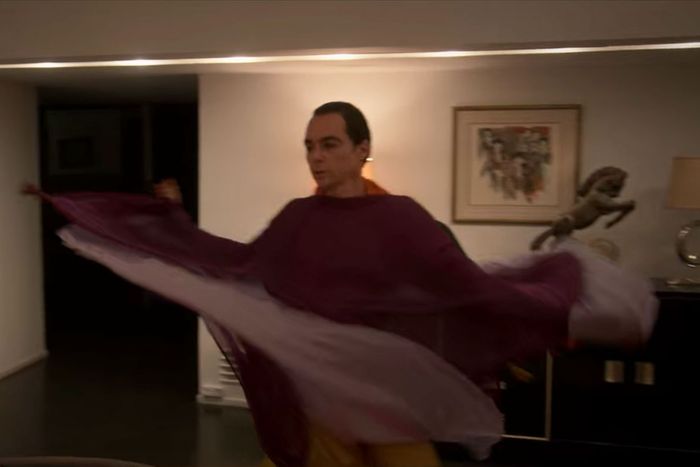
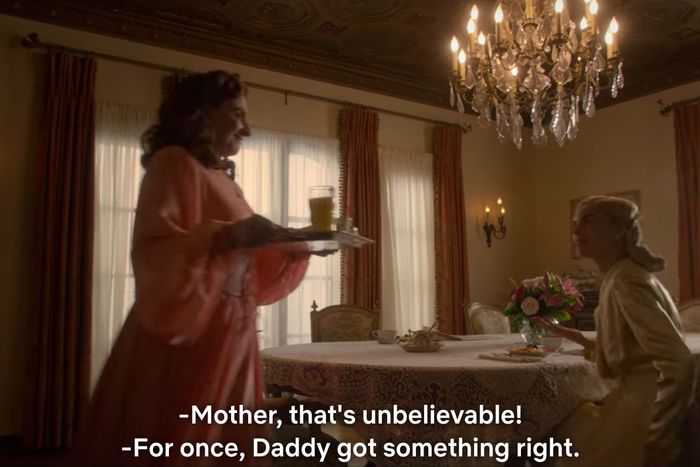
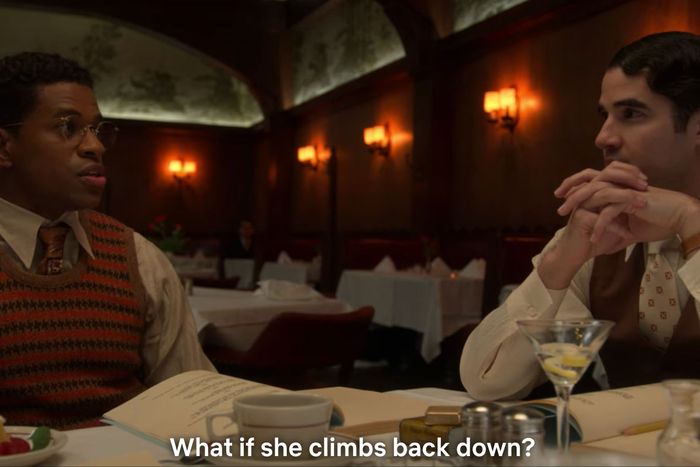
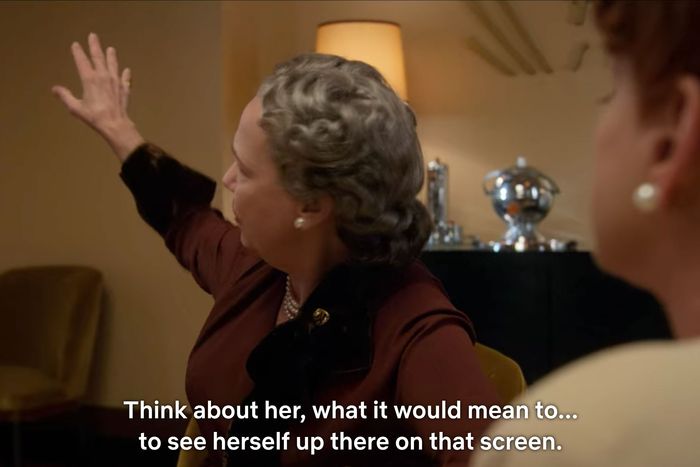














0 Response to "When, Exactly, Does Hollywood Go Off the Rails? - Vulture"
Post a Comment